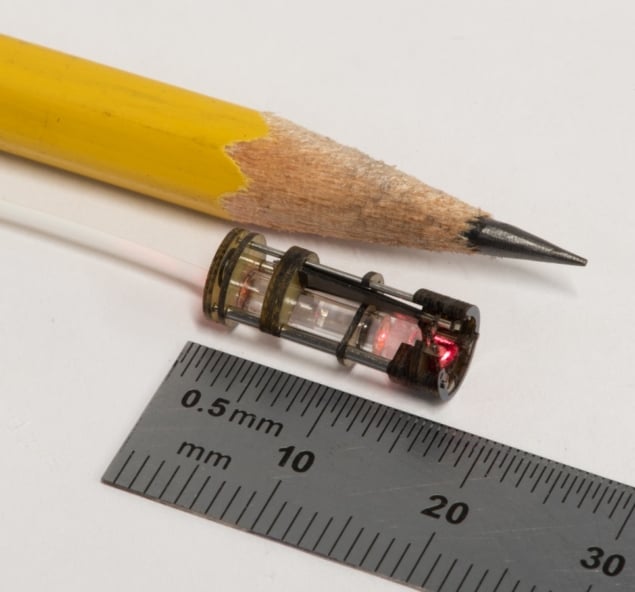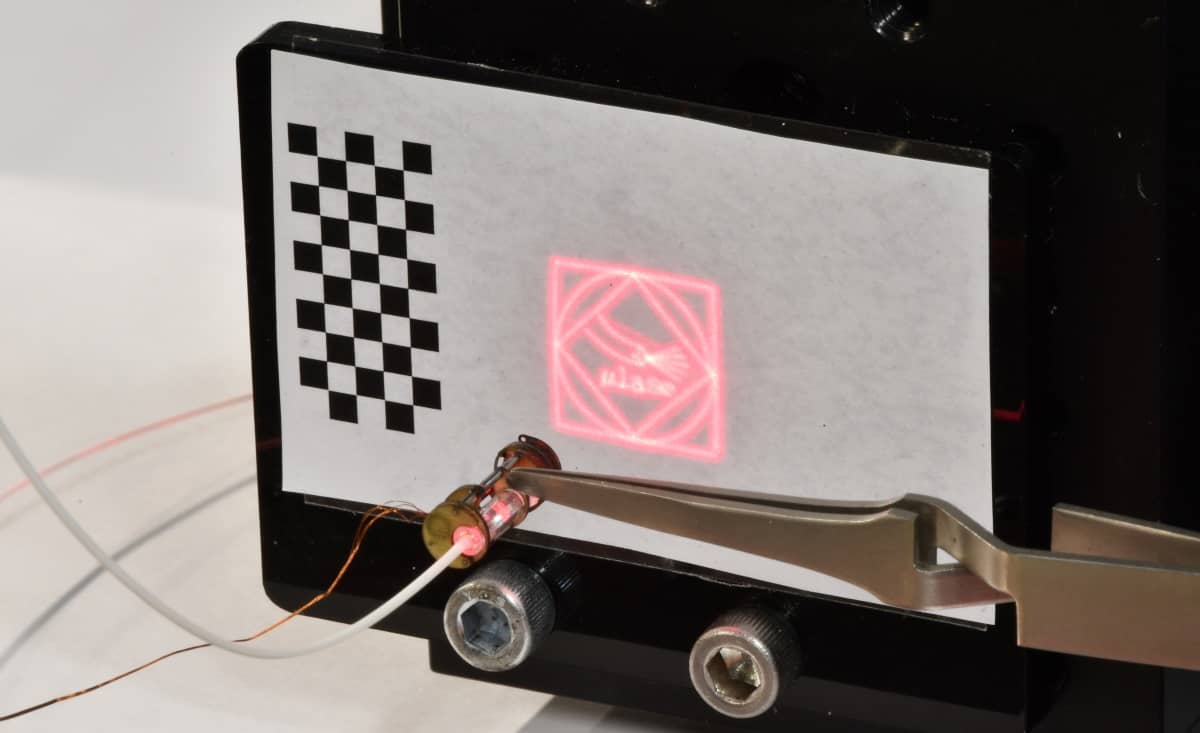
A team of researchers at Harvard University have created an innovative microrobotic device capable of steering a laser beam at high speed and with a large range of motion, which could help to significantly improve the performance of minimally invasive surgeries.
A paper outlining the results of the research, published recently in the journal Science Robotics, describes how the advanced opto-electro-mechanical device – consisting of a laser-steering microrobot housed within a miniaturized package – can be integrated with existing endoscopic surgical tools, providing a key advantage over the relatively bulky laser-aiming technology currently available.
As lead author Peter York, from Harvard University’s Wyss Institute for Biologically Inspired Engineering and the Harvard Microrobotics Lab, explains, he and his colleagues became interested in the use of lasers for minimally invasive surgery when they learned how lasers are employed for vocal fold polyp resection in a procedure known as transoral laser microsurgery. During this procedure, the precision of the laser allows surgeons to make very fine dissections to retain healthy tissue and recover voice function.
The Harvard team then began investigating how the precision of that procedure could be brought into other surgical arenas such as laparoscopy and gastroenterology. They then made what York describes as the “unfortunate” discovery that the laser used for vocal fold resection is highly specialized for that procedure alone, and is controlled by mirrors outside the patient’s body and aimed through their airway down to the vocal folds.

“However, we realized that the laser steering elements could be miniaturized using the tools and techniques we have developed in the Wood Lab at Harvard,” he says. “The idea is to put the laser steering components onto the ends of surgical tools, such as flexible colonoscopes and laparoscopic manipulators, with the ultimate aim of providing dramatically improved incision quality relative to existing static laser, electrocautery and cold surgical tools.”
The key benefits of this approach, York explains, are additional dexterity – the ability to angulate the laser, and robotic control – the ability to move the laser with greater speed and precision than is possible with handheld tools.
MEMS Technology
The device, which is just 6 mm in diameter and 16 mm in length, contains two mirrors controlled by piezoelectric actuators that direct the laser’s position. In order to address the challenge of ensuring enough motion is generated within such a small device, the team used miniature compliant mechanisms that convert the linear motion of the actuators into the rotational motion of integrated mirrors.
“These compliant mechanisms are built using printed circuit MEMS (micro-electro-mechanical systems), which allow them to be built very compactly. It is the same fabrication technology that the Microrobotics Lab at Harvard has used for other advances, such as the Harvard Robobee,” York says. “An alternative to our approach would be, for example, to use miniature electric motors, but these simply aren’t made small enough to be suitably miniaturized for these applications.”
The team is currently focused on deploying the system in clinical settings and tackling the additional challenges of ensuring the robustness of the device in what York describes as the “tricky, constrained environments” found inside the human body.
“For example, the system must be robust to external forces, vibrations and fluids. This requires encapsulation and additional validation,” he says.
The researchers demonstrated that their laser-steering device could map out and follow complex trajectories with high speed, over a large range and repeat this motion with high accuracy. They also attached the device onto the end of a colonoscope and used it to target lesions in an artificial colon model.

Although the system has so far only been validated using a consumer-grade pointing laser, York reveals that the team is currently working on integrating the device with the types of high-powered lasers used in surgery.
“There are two technical challenges that come from using surgical lasers: firstly, the alignment of all the optical components becomes even more important than with the consumer grade lasers. Misalignment causes energy to be dumped into the device itself instead of transmitted through, which leads to premature failure,” he says.
“Secondly, thermal loads, even if alignment is perfect, become important to manage. The laser energy that is not transmitted through the device due to inherent limitations of the optical materials must be absorbed as heat,” York adds.



